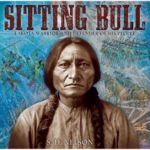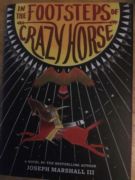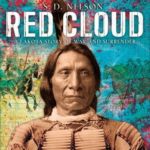Clara spends her summer visiting her grandma and cousin on Standing Rock reservation, where Clara and her family set up the ancestral tipi and grow closer together as they tell stories, sing songs, and learn about their Lakota roots.
Lakota
Thunder’s Hair
Thunder is tired of dealing with bullies at school who pick on him because of his long hair. They don’t understand why a boy would grow his hair long. When he is sure he has made up his mind to cut it, his grandmother reminds him of the power of having long hair.
We Are All Related
There is a belief that a Native American tribe, the Lakota believe in. That is, there is one Creator and that everything that is living in the Universe is our relative. This children’s book reminds children of the knowledge that we are all born with. Meant for primary grade children, this is a message that is universal to all ages.
Thunderous
If Aiyana hears one more traditional Lakota story, she’ll scream! More interested in her social media presence than her Native American heritage, Aiyana is shocked when she suddenly finds herself in a magical world-with no cell coverage! Pursued by the trickster Raven, Aiyana struggles to get back home, but is helped by friends and allies she meets along the way. Her dangerous journey through the Spirit World tests her fortitude and challenges her to embrace her Lakota heritage. But will it be enough to defeat the cruel and powerful Raven?
Sitting Bull

A detailed time line and author’s note reflect extensive research and a depth of understanding about the topic. The book is engagingly told in the first person, with Sitting Bull describing his childhood training to be a warrior and a hunter. White people had been in the area for many years, but increased westward expansion and the decision to build forts brought the tensions among the various Native groups and white settlers and soldiers to a higher level. The book does not attempt to present all sides of the issue but instead concentrates on what happened to the Hunkpapa people and other Sioux groups and the pivotal battles of Killdeer Mountain, Rosebud Creek, and Little Bighorn.
In the Footsteps of Crazy Horse

Jimmy, a young Lakota boy, struggles with fitting in on his reservation because he does not look like the other Lakota boys; he has light hair, blue eyes, and his father is of Scottish decent. Grandpa Nyles sees an opportunity to introduce Jimmy to another Lakota who had fair hair and light skin—the famous Crazy Horse. Over the course of their trip, Grandpa Nyles recounts history and stories about the life of the Lakota hero and the events that shaped him into a powerful leader, including famous battles and standoffs against the white settlers.
Red Cloud

A leader among the Lakota during the 1860s, Chief Red Cloud deeply opposed white expansion into Native American territory. He rejected treaties from the U.S. government and instead united the warriors of the Lakota and nearby tribes, becoming the only Native American to win a war against the U.S. Army. Despite his military successes, Red Cloud recognized that continued conflict would only bring destruction to his people.
